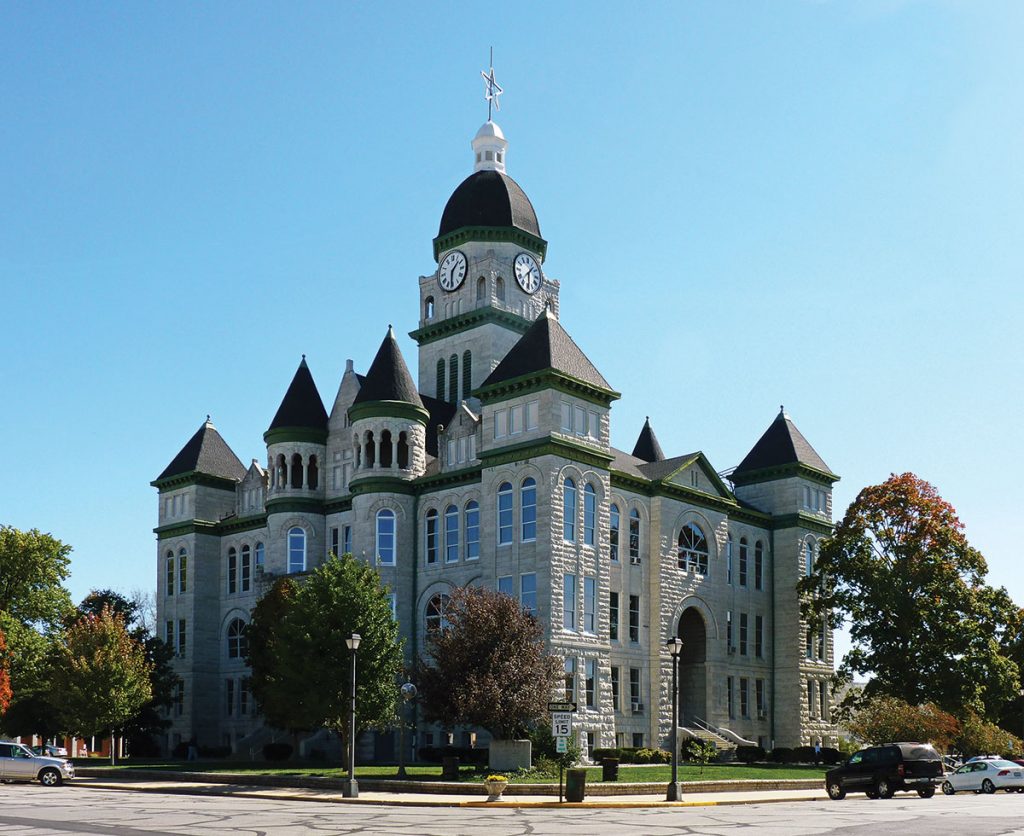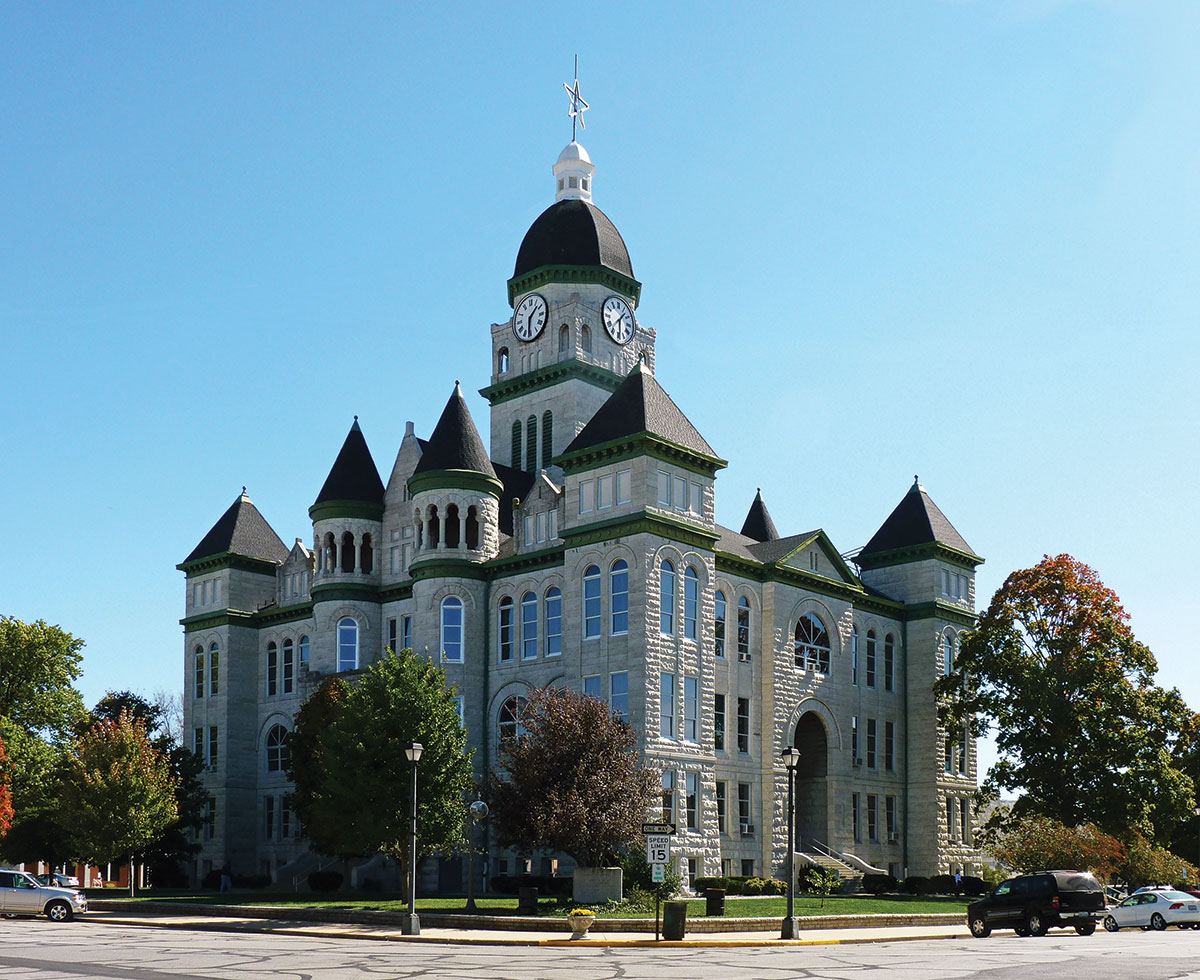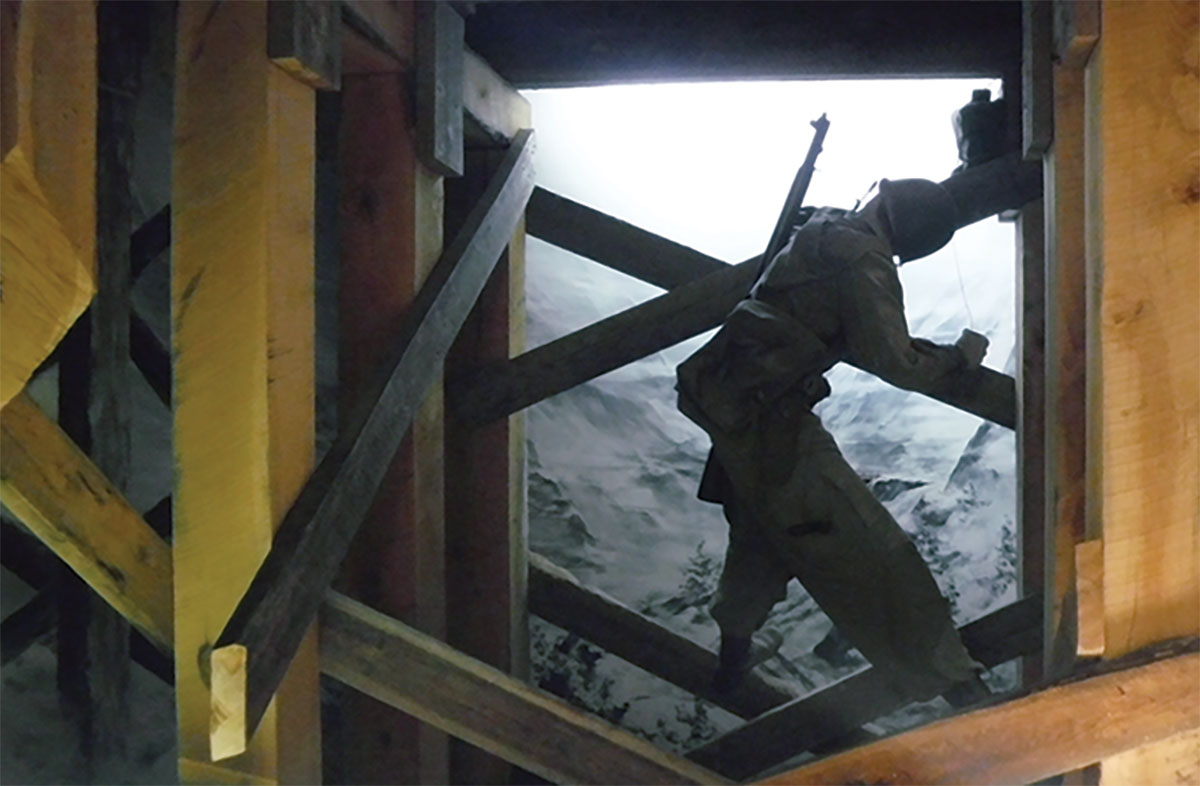
The Jasper County Courthouse has a unquie appearance and history
Jasper County’s third courthouse in Carthage, Mo., is a source of pride to the area residents and is on the U.S. National Register of Historic Places. However, the building didn’t come without problems for the budding government as it struggled through building and using two other courthouses.
The split log house of George Hornback in the pioneer village of Jasper, Mo., on a bluff above Spring River was designated the first, temporary courthouse/county seat on Feb. 25, 1841, after Jasper was organized as a government entity on Jan. 29, 1841.
The first meeting in the Jasper County Courthouse was the Circuit Court. Gov. Thomas Reynolds appointed Samuel M. Cooley, Jeremiah Cravens and Samuel B. Bright as the first County Court Judges, and John P. Osborne as sheriff. The court selected Elwood B. James as the first county clerk. The land included in Jasper County, at that time, was all of present-day Barton County, plus all but a 3-mile-deep strip along the southern boundary of the present Jasper County.
The court adopted Carthage, Mo., as the permanent county seat on March 28, 1842. When the initial town survey was completed, there was a provision for a public square with a courthouse in the center to be on the highest plateau included in the county’s boundaries.
Jasper County’s first courthouse, a one-story building on the north side of the square in Carthage, cost $398.50 and was built by Levi H. Jenkins. He completed the Jasper County Missouri Courthouse building on June 29, 1842.
The next courthouse was built on the square, also. In July 1849, plans were presented by John R. Chenault. He was allowed $15 for the plans and specifications. It didn’t fly as Gabriel Johnson built the courthouse after the first order was rescinded. The brick building cost $4,760 with the first floor used for the circuit court room and offices, and the second story for jail and offices. The courthouse was completed on July 10, 1854. It was used as a hospital during the Civil War and destroyed by fire in October 1863.
When county government resumed in 1865, Cave Springs Academy served as a temporary courthouse. However, the country was in such turmoil that for the next 30 years, the court moved into several temporary quarters: a school, a remodeled jail, a two-story building on the west side of the square and a Baptist church converted for the court’s use
Finally, in 1891, officials tried to begin the project of building two courthouses. One, a joint Carthage-Jasper County project costing $100,000, and the other, a special $20,000 one at Joplin for holding Circuit Court. This didn’t happen because Webb City residents challenged the election based on a technicality in the voting procedure. The disagreement ended in the Supreme Court, which decided the issue be resubmitted to the people. In May 1893, the tax funding for the building received an affirmative vote.
The $100,000 costs were shared equally by the city and county. The city would be granted the use of not less than four rooms. The plans for a 106-by-133-foot building constructed of native Carthage stone was accepted by the officials, and M.A. Orlopp as the architect.
A strained relationship developed between the architect and the court-appointed superintendent of construction, Nelson L. Damon. Factions and resentment spread in the community as the dispute spread. The newspapers fanned the flame by carrying accounts of both sides of the argument. Generally, they were sympathetic to Damon. After all the problems, the cornerstone was laid on Aug. 21, 1894.
In spite of the problems of conflicting personalities and questions of judgment, the building was dedicated Oct. 9, 1895.
The Richardsonian Romanesque tower was constructed with local Carthage marble and has medieval castle features that include turrets, towers and arches.
At the time the courthouse was approved, Annie White Baxter (pictured on page 10 on the upper left) was elected as county clerk. She was the first woman to be elected as a county clerk in the United States. She had a significant influence in planning the building as a member of the county government.







